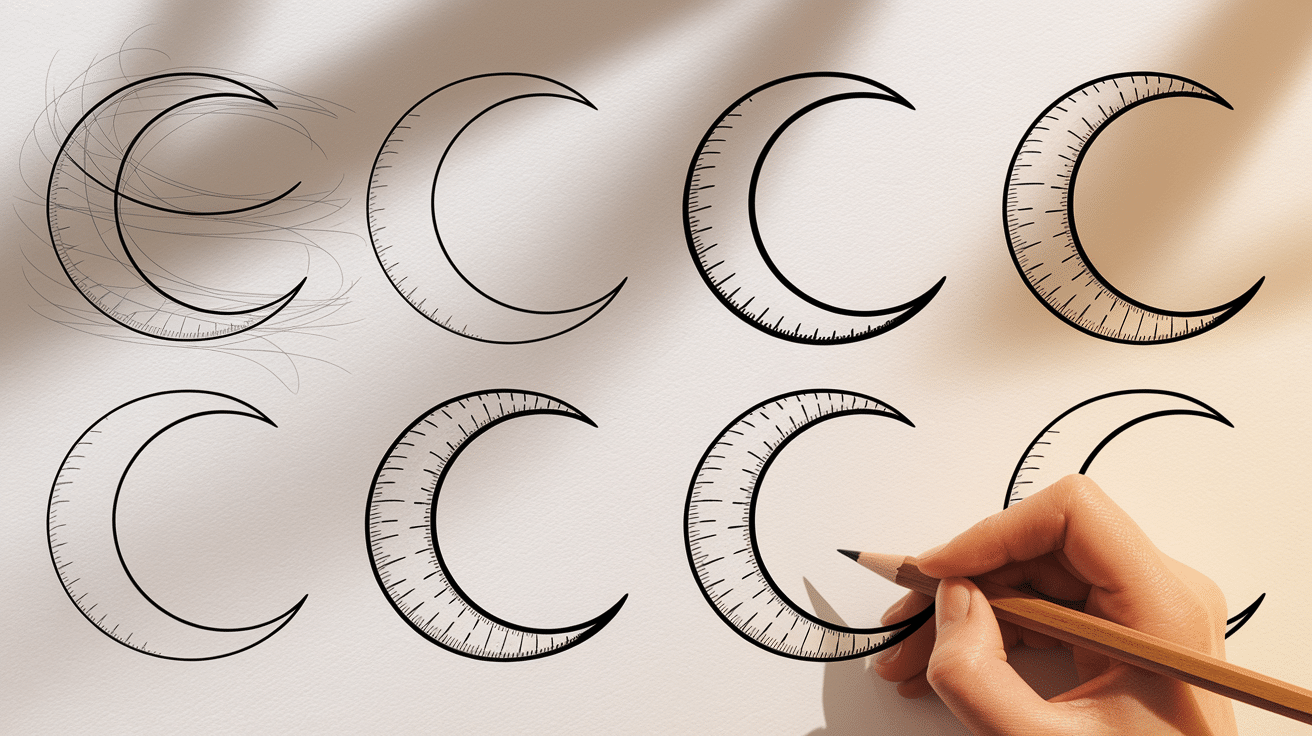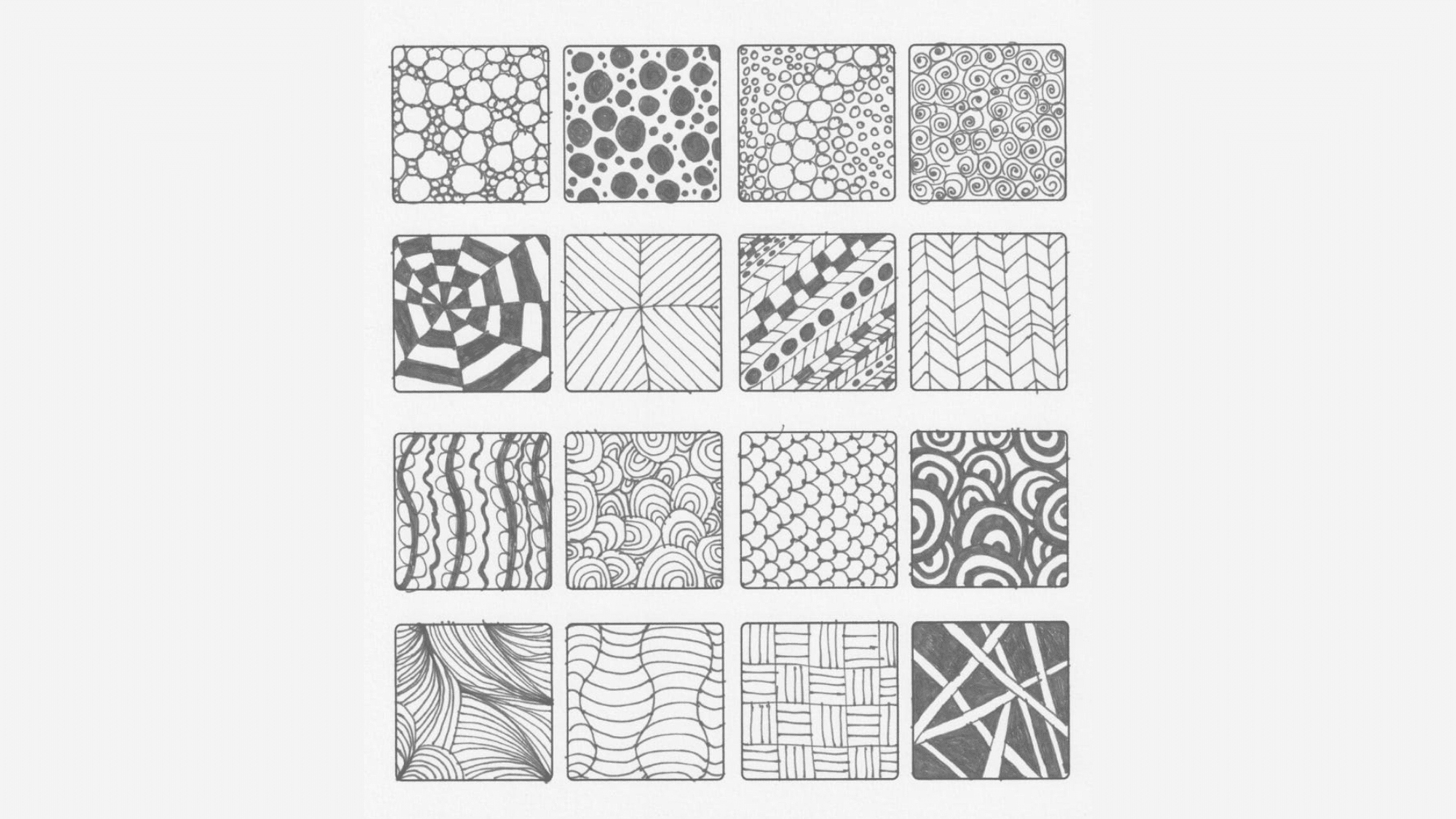Looking for easy Zentangle patterns perfect for beginners?
Well, these simple, beginner-friendly designs require no prior artistic experience and can be quickly mastered in just a few minutes.
Even if you are new to meditative drawing or seeking a relaxing, creative outlet, Zentangle offers a great way to unwind and find your artistic side.
With repetitive patterns and soothing lines, you will soon discover how enjoyable and stress-relieving this art form can be.
Start with these easy patterns and begin on your Zentangle path today!
What are Zentangle Patterns?
Zentangle patterns are structured designs created through repetitive, meditative drawing.
Unlike traditional art forms, Zentangles focus on the process rather than the outcome, making them perfect for stress relief and creative expression.
Easy Zentangle patterns use basic strokes, dots, lines, curves, and simple shapes that anyone can master regardless of artistic ability.
Why Start with Easy Patterns?
- Build confidence with achievable designs.
- Develop muscle memory for basic strokes.
- Experience immediate stress relief.
- Create beautiful art in just 5-15 minutes
- No erasing allowed—embrace imperfection
What You’ll Need:
- Fine-tip black pens (0.5mm recommended)
- 3.5″ x 3.5″ white paper tiles
- Pencils for initial guidelines
- Blending stump or tortillon (optional)
Budget-Friendly Alternatives
You don’t need to break the bank to start Zentangling; these affordable options offer great results without compromising your creativity.
Easy Zentangle Patterns for Beginners
Simple and relaxing, these beginner-friendly Zentangle patterns are perfect for honing your drawing skills while unleashing your creativity.
Pattern 1: Crescent Moon
Difficulty: Beginner | Time: 5 minutes
Steps:
- Draw gentle curved lines across your tile
- Add crescent moon shapes along each curve
- Fill crescents with parallel lines
- Add light shading between crescents
- Blend shadows with your finger or stump
The Crescent Moon pattern teaches fundamental curve control while creating an instantly recognizable design. This pattern works beautifully as borders or standalone elements.
Pattern 2: Hollibaugh
Difficulty: Beginner | Time: 7 minutes
Steps:
- Draw random straight lines across your tile
- Identify where lines intersect
- Erase small sections to create “under/over” weaving
- Thicken some lines for variation
- Add shading to enhance the 3D effect
Hollibaugh introduces the concept of visual depth through simple line work, making it perfect for beginners learning dimensionality.
Pattern 3: Tipple
Difficulty: Beginner | Time: 10 minutes
Steps:
- Create scattered dots of various sizes
- Draw small circles around each dot
- Connect circles with gentle curved lines
- Add smaller dots in empty spaces
- Shade circles for a dimensional effect
Tipple develops dot-making skills and spatial awareness while creating organic, flowing designs.
Pattern 4: Flux
Difficulty: Beginner | Time: 8 minutes
Steps:
- Draw a curved “spine” line
- Add parallel curves on both sides
- Create ribbon-like flowing bands
- Vary the width of your bands
- Add subtle shading under curves
Flux teaches smooth curve creation and develops confidence in flowing, organic line work.
Pattern 5: Printemps
Difficulty: Beginner | Time: 6 minutes
Steps:
- Draw simple curved petal shapes
- Add small circles for flower centers
- Create stems with straight lines
- Add leaf shapes along stems
- Repeat the pattern to fill your tile
Printemps combines curves and straight lines while introducing natural motifs perfect for spring-themed artwork.
Pattern 6: Beadlines
Difficulty: Beginner | Time: 5 minutes
Steps:
- Draw gentle curved guidelines
- Add circular “beads” along each line
- Vary bead sizes for interest
- Connect beads with thin lines
- Add shading to create dimension
Beadlines perfect circle-drawing skills while creating elegant, jewelry-inspired designs.
Pattern 7: Cadent
Difficulty: Beginner | Time: 8 minutes
Steps:
- Draw connected oval chain links
- Add small connecting elements
- Create flowing, chain-like bands
- Interweave multiple chains
- Add shading for a metallic effect
Cadent develops consistent oval-making skills while creating interconnected, flowing designs.
Pattern 8: Fescu
Difficulty: Beginner | Time: 7 minutes
Steps:
- Draw thin, blade-like shapes
- Add texture lines within blades
- Group blades into natural clumps
- Various heights and angles
- Add ground line and shading
Fescu teaches organic line variation while creating natural grass textures.
Pattern 9: Crescent Moon Variation
Difficulty: Beginner | Time: 6 minutes
Steps:
- Draw overlapping crescent shapes
- Add internal line patterns
- Create depth with strategic shading
- Vary the crescent sizes for interest
- Blend shadows for smooth transitions
This variation builds on the basic Crescent Moon, adding complexity without increasing difficulty.
Pattern 10: Keeko
Difficulty: Beginner | Time: 9 minutes
Steps:
- Draw connected triangular shapes
- Add internal divisions
- Fill sections with different textures
- Create geometric repetition
- Add shading for a dimensional effect
Keeko introduces geometric thinking while maintaining simplicity, perfect for beginners.
Common Beginner Mistakes and Solutions

Starting something new always comes with its challenges, but understanding common pitfalls and how to overcome them can make the journey smoother and more enjoyable.
1. The Perfectionism Trap
- Problem: Beginners often restart when they make a “mistake.”
- Solution: Welcome imperfection, it’s part of Zentangle philosophy. There are no mistakes, only opportunities for creative adaptation.
2. Rushing Through Patterns
- Problem: Hurrying leads to uneven lines and inconsistent spacing.
- Solution: Focus on the meditative aspect. Each stroke should be deliberate and mindful.
3. Wrong Pen Pressure
- Problem: Pressing too hard creates thick, harsh lines.
- Solution: Use gentle, consistent pressure. The pen should glide smoothly across the paper.
4. Spacing Issues
- Problem: Inconsistent spacing between pattern elements.
- Solution: Practice measuring distances visually. Use light pencil guidelines if needed.
5. Comparing to Others
- Problem: Feeling discouraged when comparing your work to experienced artists.
- Solution: Remember that everyone starts somewhere. Focus on your personal growth and enjoyment.
From Easy to Intermediate Patterns
Once you have mastered these 10 easy patterns, you are ready for intermediate challenges:
- Combining patterns: Mix two or three patterns on one tile.
- Adding color: Introduce colored pencils or markers.
- Larger formats: Work on bigger papers or canvases.
- 3D effects: Learn advanced shading techniques.
Conclusion
You now have everything needed to start your Zentangle journey with confidence.
These easy patterns provide a solid foundation for countless creative possibilities.
The most accomplished Zentangle artists started exactly where you are now. Trust the process, enjoy the journey, and celebrate every small achievement.
Start your first tile today, and you will appreciate yourself for beginning this wonderfully meditative practice.




















